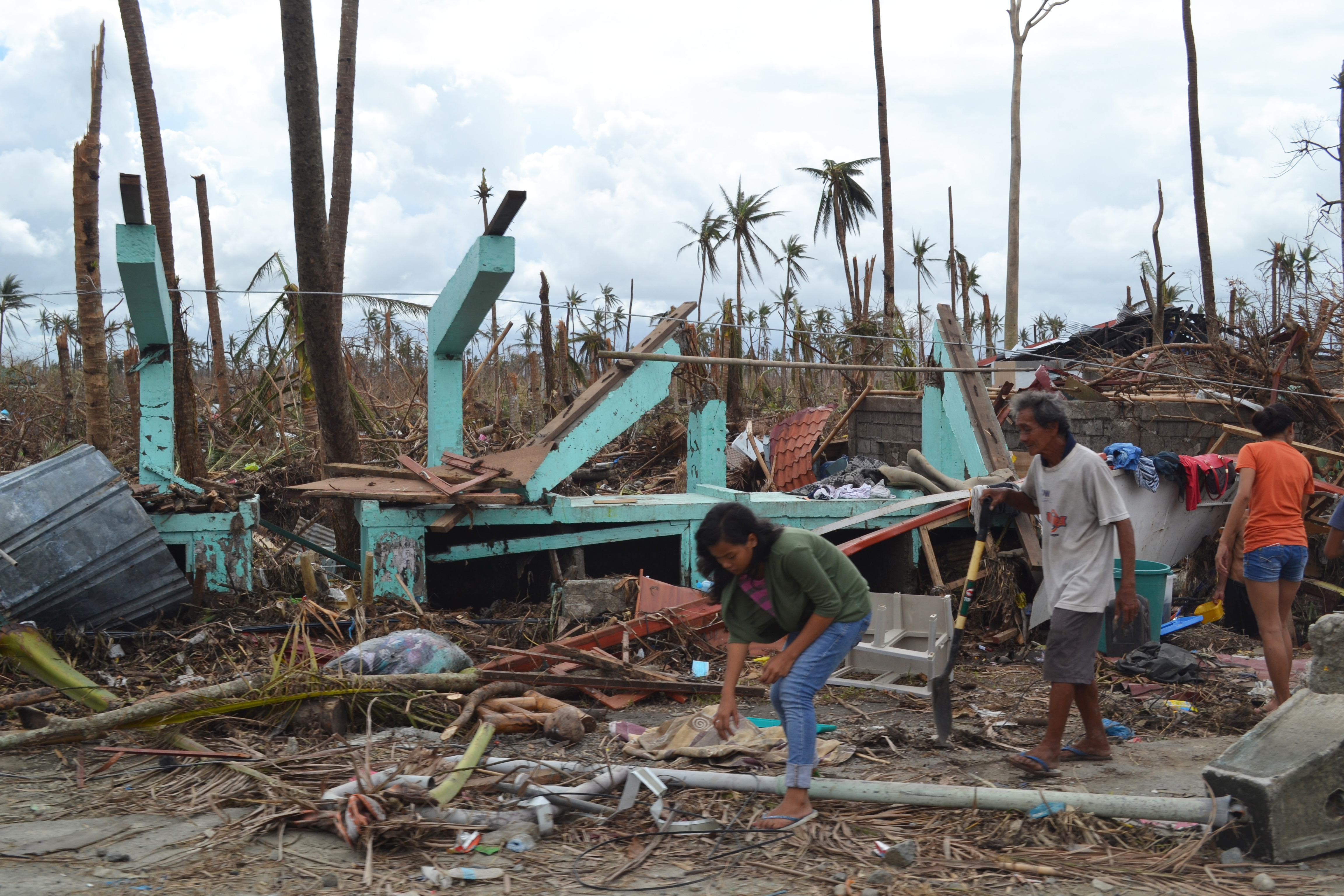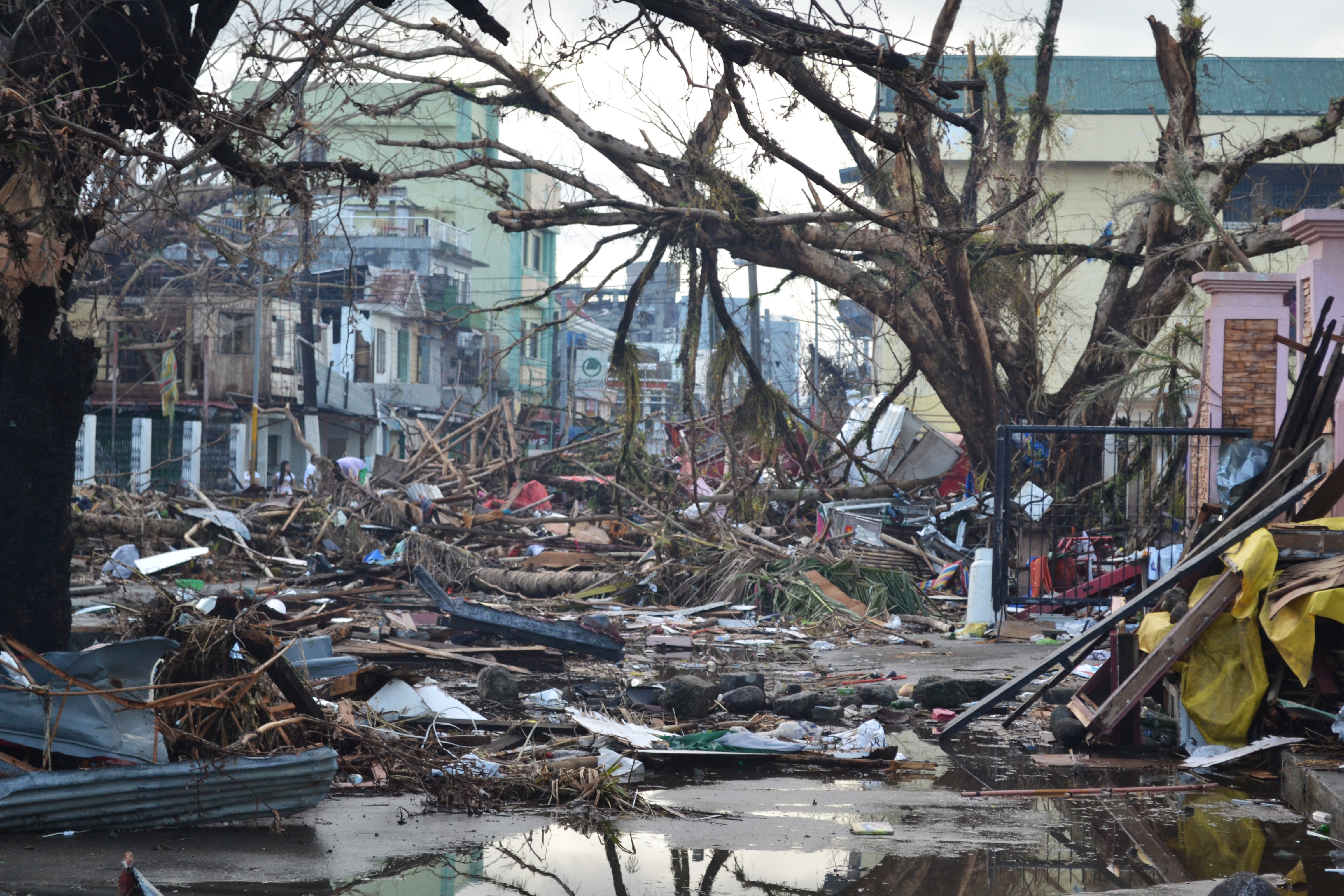Lifestyle
Life after Deaths: Surviving Haiyan

A destroyed house on the outskirts of Tacloban on Leyte island. This region was the worst affected by the typhoon, causing widespread damage and loss of life. Caritas is responding by distributing food, shelter, hygiene kits and cooking utensils. Photo by Eoghan Rice for Trócaire, Caritas / Wikipedia
Can you imagine a typhoon so strong and so fierce that it carried a 1000-ton cargo ship from the sea and plunked it in the middle of a town?
That’s exactly what happened the morning of November 8, 2013, when super typhoon ‘Yolanda’ (international name ‘Haiyan’)—equivalent to a Category 5 hurricane and reported to be the strongest typhoon in the world in the last century—ravaged through the Visayan provinces. According to the National Disaster Risk Reduction and Management Council (NDRRMC), Eastern Visayas was the most damaged. The region lost 5,870 of their residents, while 26,186 were injured and 1,005 are still missing as of March 14, 2014—over 5 months after Yolanda’s fatal landfall.
While some may say that “death is inevitable” or “we’re all going to die anyway,” its sting never loses its potency. It is one thing to know that it is the normal cycle of life. It is another thing if it comes when it’s cruelly rubbed on your face.
The harsh reality of death—further amplified by the destruction brought about by ‘Yolanda’—was something everybody tried to avoid but failed miserably.
Yet, despite all the loss and all the destruction, the Filipinos live. They are thriving with smiles on their faces and hope in their hearts.

Debris lines the streets of Tacloban, Leyte island. This region was the worst affected by the typhoon, causing widespread damage and loss of life. Caritas is responding by distributing food, shelter, hygiene kits and cooking utensils. Photo by Eoghan Rice for Trócaire, Caritas / Wikipedia
A Ship, A Neighbor
Anton, Sheila Mae, and Alyana Cuenca of Barangay 69 in Tacloban are perhaps excellent examples of optimism in a rather bleak environment.
In an interview with the Philippine Daily Inquirer’s Danny Petilla, Anton shared his thoughts about their new neighbor.
“It am amyaw barko! (Our neighbor is a boat!)” Anton laughed.
The three kids lost one of their dear playmates to ‘Yolanda.’ Dane Yadawon was only 3 years old when the super typhoon claimed his young life. He was found inside MV David, a cargo ship owned by Candano Shipping Lines of Tabaco.
According to the Office of Civil Defense (OCD), two out of every five corpses retrieved in the aftermath are kids.
Alyana recalled that their friend Dane looked alive when they saw him.
“Dane looked like he was alive. But he was not breathing anymore,” Alyana said in local vernacular.
Dane was just one of the dead people the siblings saw when Yolanda’s wrath subsided.
Shiela Mae shared, “We saw a lot of dead people. I was scared of the bones.”
Despite evacuating early with the entire family and leaving their house—the fruit of their parents’ hard work—at the mercy of ‘Yolanda,’ Alyana almost became part of the death statistics if not for their neighbor Crispin Arcoles, who saved her from the raging waters due to the storm surge.
“He (Crispin) is gay, but he saved me. He is my hero,” Alyana shared.

U.S. Marines help displaced Philippine nationals from the back of a KC-130J Super Hercules at Vilamor Air Base, Manila, Republic of the Philippines Nov. 11. Super Typhoon Haiyan has impacted more than 4.2 million people across 36 provinces in the Philippines, according to the Philippine government’s national disaster risk reduction and management council. Photo by Lance Cpl. Caleb Hoover / Wikipedia
Helping out after the storm
The Philippine government is under fire for allegedly mismanaging the incoming help from all over the world. Resources were left rotting in warehouses, donated goods were reportedly being sold to survivors, and donations were said to control by certain people and agencies for their political gain and personal benefit.
However, may survivors still attest to the government’s “4Ps” program (Pantawid Pamilyang Pilipino Program) as a source of their monetary income, together with the Catholic Relief Services’ (CRS) Cash-for-Work program.
World relief also continues to pour in.
A report from CNN in January 2014 said that Prince Charles arranged the transport of five million doses of rubella and measles vaccines for ‘Yolanda’ victims. The storm ravaged areas suffered from a measles outbreak. According to the Department of Health, 15,600 cases of measles were recorded from January to February 2014. The value tripled from 2013’s value of 5,863 cases.
Japan, just two weeks after celebrating the third anniversary of the deadly tsunami and earthquake of March 11, 2011, decided to send more help to the Philippines to the tune of $3.7 million.
According to the Department of Social Welfare and Development, Australia sent additional support of more than P1.2 trillion for various rehabilitation projects in the disaster-stricken areas—from livelihood to building classrooms to creating a multi-hazard mapping to stocking relief supplies.
Even private residents and Filipino business owners are stepping up to help out.
According to a report from ABS-CBN, there are talks between its owner Roble Shipping Lines Inc. and the local government of Tacloban of turning one of the nine ships that ran aground at the height of super typhoon ‘Yolanda’—MV Star Hilongos in Anibong district—into a landmark and a restaurant.
Everyone can agree that the road to recovery will be long and hard, but with the Filipinos’ unwavering fighting spirit and a hope that springs eternal, walking down that road is a journey worth taking.





















